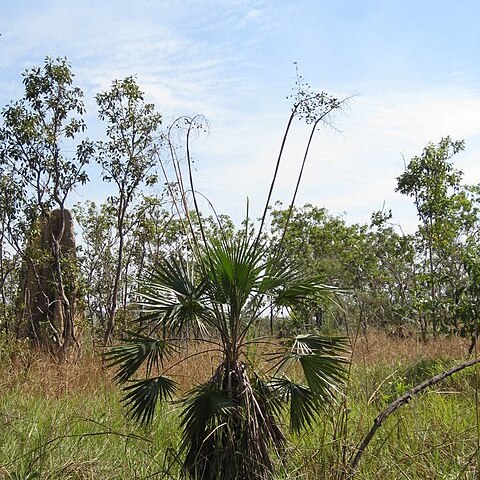Trunk to 7 m tall, 5–8 cm diam., grey; base with persistent petiole stubs, smooth above. Leaves 8–15 in an open crown; petiole 40–70 cm long, 6–14 mm wide, with small marginal thorns; leaf blade circular, 30–50 cm long, chartaceous, dark green, glossy, abaxially glabrous, divided to more than 1/2 its length; segments 30–44, rigid, bifurcate, with acuminate lobes. Inflorescences sexually dimorphic; male arcuate, to 180 cm long, with 4–7 partial inflorescences branched to 4 orders; female erect, to 230 cm long, with a single distal partial inflorescence branched to 3 orders; bracts with small appressed scales; rachillae pubescent. Flowers: male and female similar, solitary or in sympodial clusters of 2–4, globose, yellow; sepals broadly ovate, 0.7–1.4 mm long, cuspidate, membranous; petals broadly ovate, 1.5–1.9 mm long, acute, fleshy; stamens c. 1.3 mm long. Fruit ellipsoid, pyriform or obovoid, 10–19 mm long, shiny, black. Seed ellipsoid, 7–9 mm long.
More
A slender palm with a single stem. It grows 2-5 m high. The trunk is about 8-12 cm across. The trunk is often black. The leaves are like a fan. They are stiff and smooth. The blade is 30-50 cm long. It is deeply divided to about half way into narrow pointed lobes. The stalk is about 40-70 cm long. There are short sharp prickles along the edge. The flowers are very small and cream. They are 0.3 cm across. They occur on a branched flower stalk which arches over. The flowering stalk is 1-2 m long and is produced above the crown. The fruit are smooth and oval. They are 1-1.5 cm long. The become purplish-black when ripe. They have thin flesh and contain a single seed. The fruit are edible.

